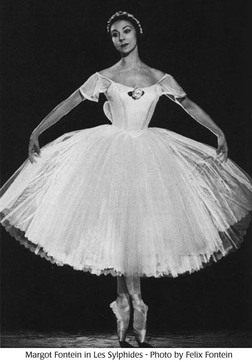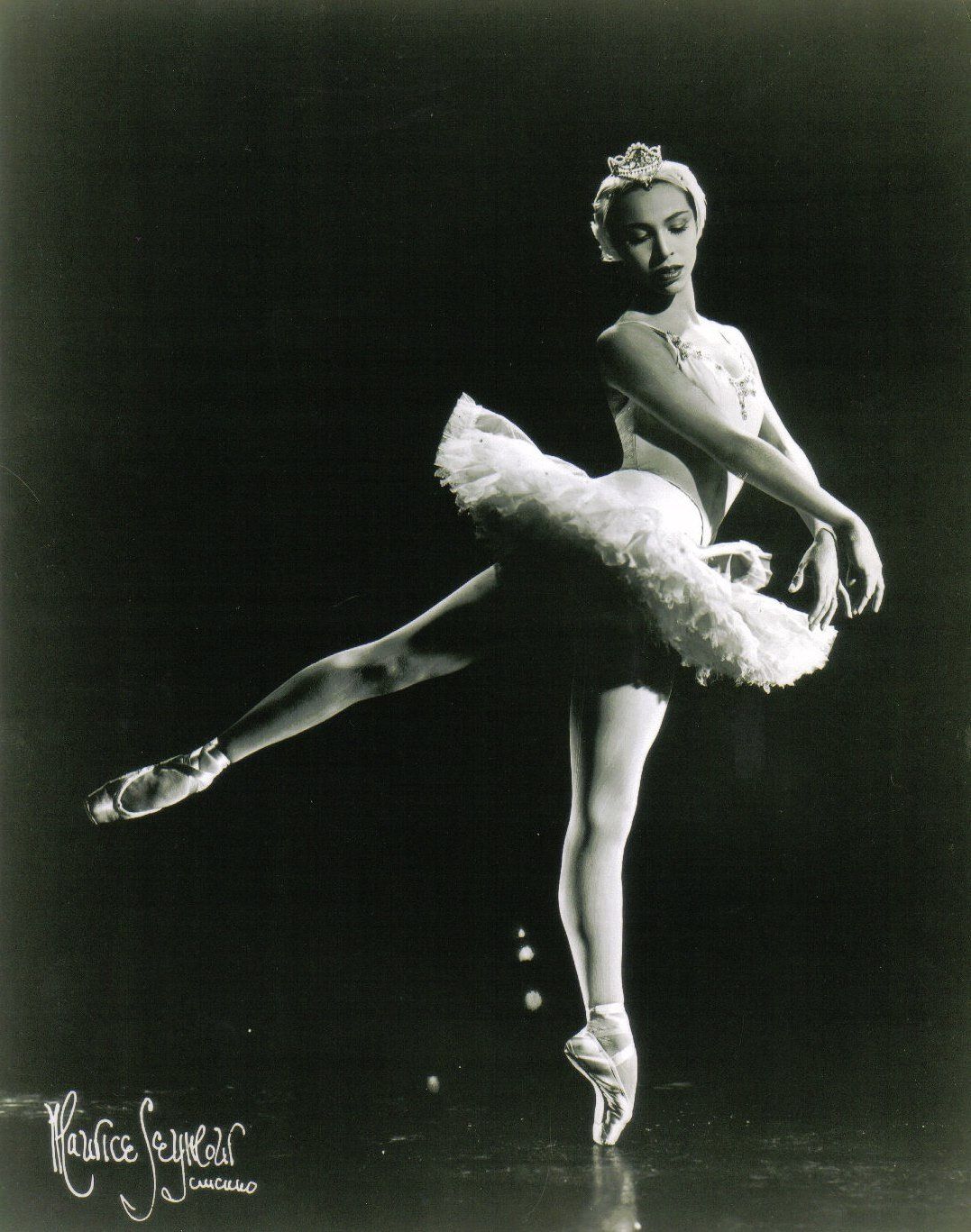QUESTIONS and ANSWERS
Q. Can I switch my pointe shoes from one foot to the other, the way I do my ballet slippers?
A. It is possible to switch them at each wearing. However, once the ribbons are tied and the excess ribbon cut off, the shoes cannot be switched. Also, some feet, particularly those with long big toes, will mold the shoes to the foot on the first wearing, and may not be comfortable when switched.
Q. Are all pointe shoes of a given style and size exactly the same?
A. NO! Because pointe shoes are handmade, no two shoes, or pairs, are identical. You should try on all available pairs in your size before selecting the pair that best fits your foot. In your career as a dancer, you will probably find only a few pairs that end up feeling wonderful. Most of the shoes you'll wear will have certain oddities or defects that will make them somewhat uncomfortable or difficult to adjust to. If you find a pair that you really like, you might try getting others made by the same cobbler (His number is usually stamped inside the shoe or on the outside shank).
Q. There are so many brands of pointe shoes available. How do I know which will best fit my foot?
A. No one can predict this with great accuracy. Trust your teacher's advice for the first few pairs of shoes until you know what they should feel like. Then if you're not comfortable with what you're wearing, experiment with other brands. If you know someone with a similar foot shape to yours, you might ask for their recommendation. But a perfect fitting pointe shoe is a highly individual thing and you are the only one who can decide which kind feels best on your feet.
Q. Once I am fit in a particular style or brand of shoe, should I always buy the same kind?
A. Not necessarily. Even after your foot stops growing, it can change and develop, and may require a different shoe. An advanced dancer may want a lighter weight and strength shoe to work in than she wore as a beginning student. It is perfectly acceptable to experiment (with your teacher's guidance) with different styles. Eventually you'll find the style which feels best, causes the least discomfort, and makes your foot look its best.
Q. What if one foot is longer than the other?
A. If the difference is slight, you may be able to wear a single pair of shoes -- fit to the larger foot. If the difference is great, you will need to buy two pairs of shoes -- one to fit each foot. Although this costs more when you buy them, you'll only need to buy them half as often.
Q. Should I keep my old pointe shoes?
A. For sentimental reasons, you'll probably want to keep your first pair of shoes. A few other shoes may hold special meaning for you -- such as the ones you wear for you first solo or pas de deux. Otherwise, if you continue to dance many years, you will accumulate many, many pairs of worn-out shoes. Some, after you think they're too soft to wear again, will dry out and harden enough to be worn a few more times. You may want to "de-shank" some pairs and wear in place of ballet slippers in class or rehearsal. Before you throw the rest away, carefully remove and wash the ribbons and sew them on new pairs of shoes.
Q. What is rosin for?
A. Rosin, the sticky, rock-like substance kept in a box in the corner of the ballet studio is made from pine tree sap. Violinists use it on their bows to produce friction between the bow hairs and the strings. Baseball players rub it on their bats to prevent their hands from slipping. Dancers grind their shoes in it to increase friction with the floor. Many schools have a special dance floor which covers the wood. This surface, if properly cared for, does not become slick and does not require rosin. In fact, the use of rosin on this kind of floor is actually harmful.
Q. Should I wear anything inside my shoes?
A. Traditionally, a thin layer a lamb's wool is placed over the joints of the toes to cushion against the hard shoe. This is quite acceptable as long as only a small amount is used. Placed inside the tights, it has less chance of slipping out of place. Lamb's wool should never be placed between the ends of the toes and the shoe. This prevents the toes from "feeling the floor" and properly controlling the placement of the foot. Other coverings, such as the toe of the thin sock, or a paper towel can be used inside the shoe and are acceptable as long as the toes can still "feel the floor". Gel-filled toe coverings are also acceptable.
Bunnies, or toe pads, which cover the tops, tips, and bottoms of the toes with foam rubber are too bulky and prevent the toes from "feeling the floor". Any shoe which is big enough for a foot and a toe pad inside, is probably too big.
Most advanced and professional dancers must change shoes so quickly and frequently during rehearsals and performances that they find it easier, and more comfortable, to not wear anything inside their shoes. Some teachers, with this in mind, prefer to start their students without lamb's wool or padding. Beginning students do not spend very much time in their shoes at each wearing and their feet toughen and strengthen gradually as the time increases.
Q. Will pointe work always hurt?
A. Because feet were not designed to stand on the tips of the toes, pointe work will always be somewhat uncomfortable. However, with properly fitted shoes, and correct, conscientious training, the discomfort is minimized.
Q. Do men dance on pointe?
A. With the exception of a few character roles, pointe shoes are worn only by women.
A. It is possible to switch them at each wearing. However, once the ribbons are tied and the excess ribbon cut off, the shoes cannot be switched. Also, some feet, particularly those with long big toes, will mold the shoes to the foot on the first wearing, and may not be comfortable when switched.
Q. Are all pointe shoes of a given style and size exactly the same?
A. NO! Because pointe shoes are handmade, no two shoes, or pairs, are identical. You should try on all available pairs in your size before selecting the pair that best fits your foot. In your career as a dancer, you will probably find only a few pairs that end up feeling wonderful. Most of the shoes you'll wear will have certain oddities or defects that will make them somewhat uncomfortable or difficult to adjust to. If you find a pair that you really like, you might try getting others made by the same cobbler (His number is usually stamped inside the shoe or on the outside shank).
Q. There are so many brands of pointe shoes available. How do I know which will best fit my foot?
A. No one can predict this with great accuracy. Trust your teacher's advice for the first few pairs of shoes until you know what they should feel like. Then if you're not comfortable with what you're wearing, experiment with other brands. If you know someone with a similar foot shape to yours, you might ask for their recommendation. But a perfect fitting pointe shoe is a highly individual thing and you are the only one who can decide which kind feels best on your feet.
Q. Once I am fit in a particular style or brand of shoe, should I always buy the same kind?
A. Not necessarily. Even after your foot stops growing, it can change and develop, and may require a different shoe. An advanced dancer may want a lighter weight and strength shoe to work in than she wore as a beginning student. It is perfectly acceptable to experiment (with your teacher's guidance) with different styles. Eventually you'll find the style which feels best, causes the least discomfort, and makes your foot look its best.
Q. What if one foot is longer than the other?
A. If the difference is slight, you may be able to wear a single pair of shoes -- fit to the larger foot. If the difference is great, you will need to buy two pairs of shoes -- one to fit each foot. Although this costs more when you buy them, you'll only need to buy them half as often.
Q. Should I keep my old pointe shoes?
A. For sentimental reasons, you'll probably want to keep your first pair of shoes. A few other shoes may hold special meaning for you -- such as the ones you wear for you first solo or pas de deux. Otherwise, if you continue to dance many years, you will accumulate many, many pairs of worn-out shoes. Some, after you think they're too soft to wear again, will dry out and harden enough to be worn a few more times. You may want to "de-shank" some pairs and wear in place of ballet slippers in class or rehearsal. Before you throw the rest away, carefully remove and wash the ribbons and sew them on new pairs of shoes.
Q. What is rosin for?
A. Rosin, the sticky, rock-like substance kept in a box in the corner of the ballet studio is made from pine tree sap. Violinists use it on their bows to produce friction between the bow hairs and the strings. Baseball players rub it on their bats to prevent their hands from slipping. Dancers grind their shoes in it to increase friction with the floor. Many schools have a special dance floor which covers the wood. This surface, if properly cared for, does not become slick and does not require rosin. In fact, the use of rosin on this kind of floor is actually harmful.
Q. Should I wear anything inside my shoes?
A. Traditionally, a thin layer a lamb's wool is placed over the joints of the toes to cushion against the hard shoe. This is quite acceptable as long as only a small amount is used. Placed inside the tights, it has less chance of slipping out of place. Lamb's wool should never be placed between the ends of the toes and the shoe. This prevents the toes from "feeling the floor" and properly controlling the placement of the foot. Other coverings, such as the toe of the thin sock, or a paper towel can be used inside the shoe and are acceptable as long as the toes can still "feel the floor". Gel-filled toe coverings are also acceptable.
Bunnies, or toe pads, which cover the tops, tips, and bottoms of the toes with foam rubber are too bulky and prevent the toes from "feeling the floor". Any shoe which is big enough for a foot and a toe pad inside, is probably too big.
Most advanced and professional dancers must change shoes so quickly and frequently during rehearsals and performances that they find it easier, and more comfortable, to not wear anything inside their shoes. Some teachers, with this in mind, prefer to start their students without lamb's wool or padding. Beginning students do not spend very much time in their shoes at each wearing and their feet toughen and strengthen gradually as the time increases.
Q. Will pointe work always hurt?
A. Because feet were not designed to stand on the tips of the toes, pointe work will always be somewhat uncomfortable. However, with properly fitted shoes, and correct, conscientious training, the discomfort is minimized.
Q. Do men dance on pointe?
A. With the exception of a few character roles, pointe shoes are worn only by women.

